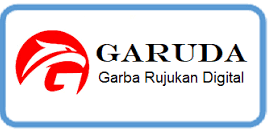OPTIMALISASI METODE PENDISKRIPSIAN BATUGAMPING UNTUK KARAKTERISASI RESERVOAR HIDROKARBON DALAM PEMODELAN GEOLOGI
DOI:
https://doi.org/10.34151/technoscientia.v3i1.443Keywords:
Core/SWC/cuttings descriptions, limestone, depositional facies, diageneticAbstract
Core/SWC and/or cuttings data from carbonate reservoir have to optimalized in their descriptions, actually for understanding their carbonate characterization. The cha-racterization is includes lithofacies and visible porosity. The method are consists of: core recovery, texture, orga-nism abundance, specific features, type and porosity percentage that have resulted a visible porosity. The precise calculation of visible porosity and factors of pore forming are best way to get a cementation factor which easily changes both ver-tical and horizontally. The carbonate depo-sitional facies and diagenetic process are use-ful to get a diagenetic unit that confirmed by cemen-tation process.
References
Dwi Cahyo M., Yaman, F., Hasani, N., and Hidayat, D.S., 2007, Incentives required to develop stranded gas field: A case study Kerendan Gas Field. Proc. IPA 31st. Ann Conv.
Read, J.F. (1985): Carbonate Platform Facies Models AAPG Bull v. 69, no. 1, p. 1-21.
Longman, M.W., (1981) : "A Process Approach to Recognizing Facies of Reef Complexes" SEPM Special Publica-tion no. 30, p. 940.
Premonowati (2005), Fasies dan Stratigrafi Terumbu Formasi Paciran Daerah Tuban, Jawa Timur, Disertasi Program Doktor, Departemen Teknik Geologi, Institut Teknologi Bandung, hal. 1 – 291.
Embry, A.F., and Klovan, E. J., 1971. Absolute Water Depth Limits of Late Devonian Paleoecological Zones. Geology Rdsch. 61/2, Stuttgart. in Rei-jers, T.J. A., and Hsu, K. J.1986.
Manual of Carbonate Sedimentology: A Lexicographical Approach. Academic Press London. 301 p.
Esteban, M., and Klappa, C. F., 1983. Subaerial Exposure Environment. in Scholle, P. A., Bebout, D.G., and Moore, C. H., (eds.). Carbonate Depositional Environments. AAPG Memoir 33. Tulsa, Oklahoma.p. 1-92.
Handford, C. R., and Loucks, R. G., 1993. Carbonate Depositional Sequences and Systems TractsResponses of Carbonate Platforms to Relative Sea Level Changes, in Loucks, R. G., and Sarg, J. F.,(eds.). Carbonate Sequence Stratigraphy Recent develop-ments and Apllication: AAPG Memoir 57.p. 3-41.
James, N. P., 1983. Reefs. in Scholle, P. A., Bebout,D. G., and Moore, C.H., (eds.). Carbonate Depositional Environments. AAPG Memoir 33.Tulsa, Oklahoma. p 345-462.
James, N. P., and Bourque, P. A., 1992. Reefs and Mounds. in Walker, R. G., and James, N. P., (eds.). Facies Mo-dels. Ontario. p. 323-347.
Longman, M. W., 1981. Carbonate Diagenesis as a Control on Stratigraphic Traps. AAPG Education Course Note Series ≠ 21.







